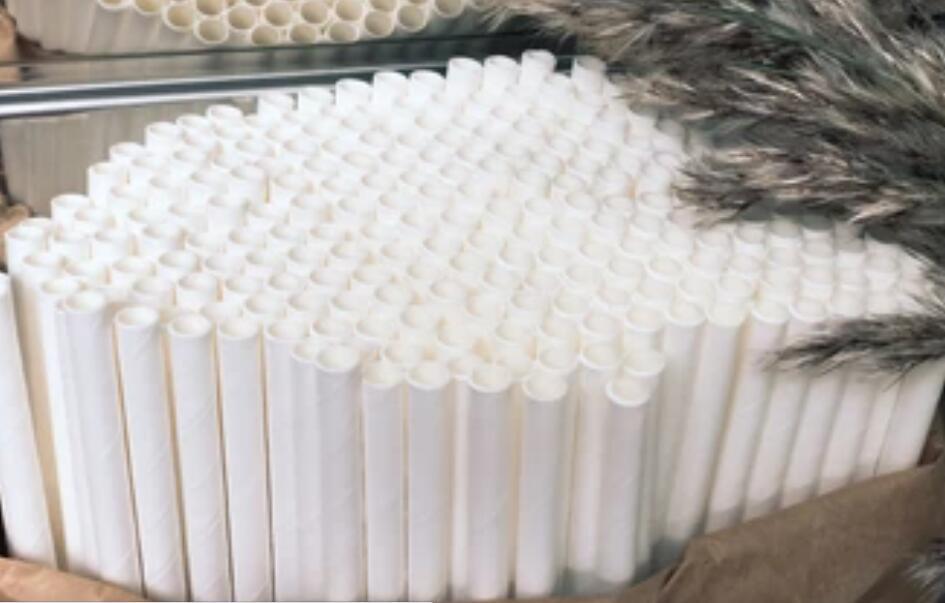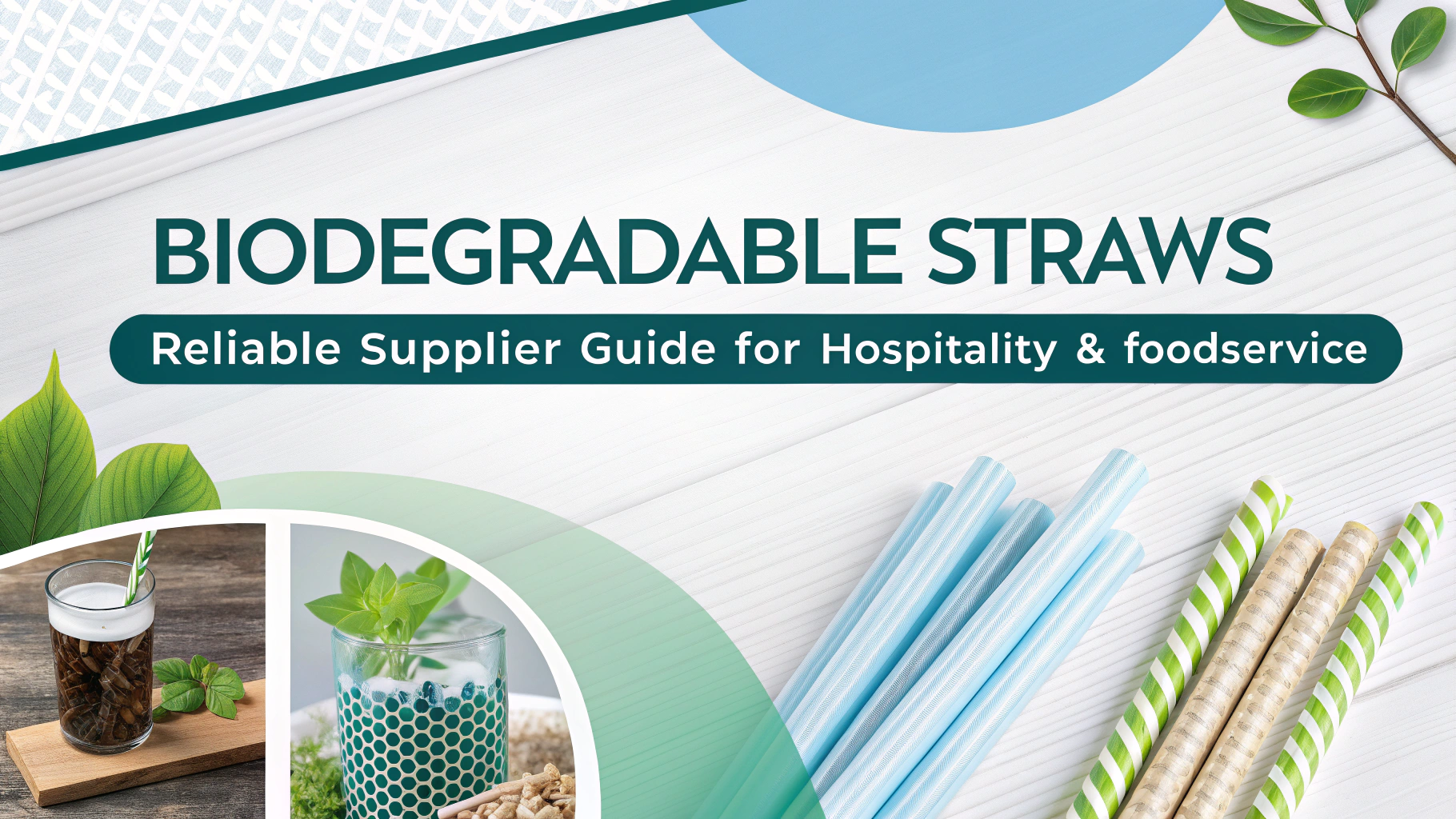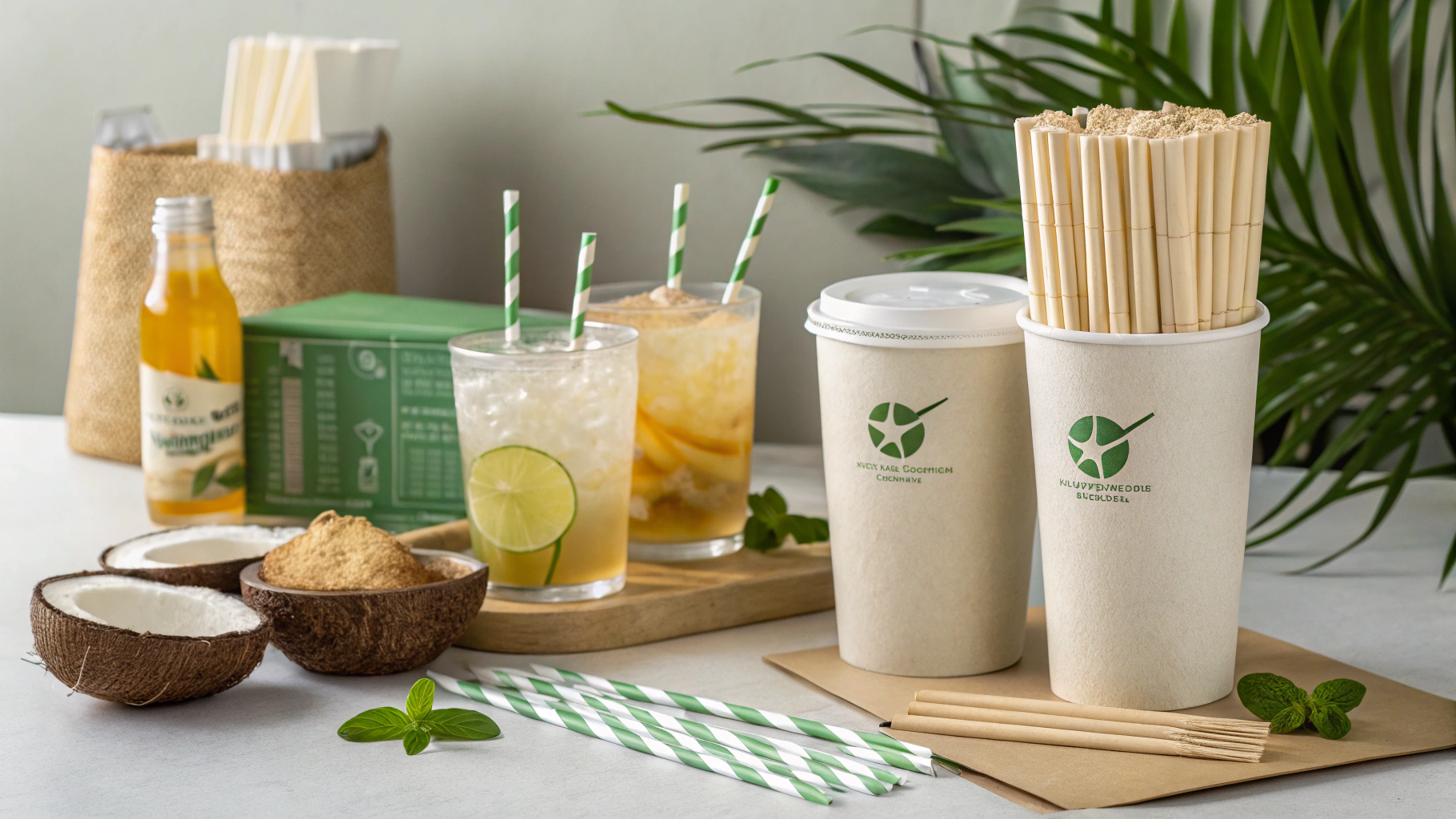
In recent years, there has been a growing concern about single-use plastic products that are becoming part of our daily lives. One of these items is plastic straws, billions of which are served in cafes and restaurants each year or as part of takeout. In the United States, about 500 million single-use plastic straws are used every day, compared to 25.3 billion a year in Europe. 500 million straws could fill over 127 school buses a day, or over 46,400 school buses a year!
That many plastic straws create an incalculable amount of trash in the ocean. 500 million straws per day is an average of 1.6 straws per person (in the U.S.) per day. Based on this national average, each person in the U.S. will use about 38,000 or more straws between the ages of 5 and 65. So the sooner we start using fewer straws, the better – it’s never too early (or too late!) to start! )
Get started! But because of the widespread use of straws, it may be difficult to change this completely.
However, there is good news. Cities across the U.S., such as Washington, D.C., Seattle, and throughout California, are explicitly asking companies to stop offering plastic straws to customers. Many restaurants, cafes, and teahouses are offering paper straws to customers instead of plastic straws.

But are paper straws really environmentally friendly?
In terms of the materials used to make paper straws, people use trees from nature to make paper straws. If people plant more trees than they cut down, they won’t damage the environment. Whereas the production of plastic products requires a supply of fossil fuels, which can bring more carbon to the environment, burning trees does not increase carbon emissions. In addition, paper straws degrade quickly in the natural environment, while plastic straws will not degrade for 500 years, which is much better than plastic straws.
Specifically, what are the benefits of paper straws compared to plastic straws?
- environmental protection, recyclable, degradable
Plastic straws if thrown into the wild. It takes 200 years or more to fully degrade, and they are not biodegradable and only turn into smaller plastic micro-particles. These tiny plastics can be mistaken for food and eaten by marine life, which may eventually enter the human food chain and cause harm to human health. Paper straws are friendly to marine life. According to a study by 5 Gyres, they break down within six months, meaning they are safer for wildlife than plastic straws. Protecting wildlife also protects our own health as humans. - Safe from harmful chemical elements
In general, manufacturers use the specified production materials, add legal additives, the production process is compliant, the production of paper straw end products in line with national standards for food safety, the circulation process is free of pollution, then the product is safer and consumers can buy with confidence. - Humanized, no sharp burrs, etc.
Not be careful during the production process, they will not have burrs if the bamboo is polished smoothly. Everyone has had the experience of being punctured by a burr. I can’t imagine how bad the result would be if the burr entered the mouth with the liquid. Paper straws do not have the embarrassing phenomenon of sharp burrs that can pierce your mouth. - Paper straws can be stylish
Paper straws can be chosen according to each person’s preference and different shapes and sizes. The logo can be customized and then printed according to your requirements, which can enhance the customer’s brand and improve brand influence. Whether you need it for cocktails, milkshakes or smoothies, popular sizes can be made, ranging from 6-12 mm in diameter to 140-250 mm in length, to meet all your needs, and if you need large industrial size paper straws can be customized. The colors of paper straws can be customized at will, and you can customize different patterns according to the occasion and usage, so paper straws also have a decorative role. It’s fun, and you can’t do that with other straws.
As the saying goes, there are two sides to a coin, and the disadvantages of paper straws have to be considered when we use them.

Disadvantages of paper straws
1. They are soggy when immersed in water for too long
When you insert the straw into the liquid, it helps you to enjoy the drink easily at first, but if you put the drink aside and try to wait for a while, the paper straw will start to become soft and rotten. It appears mushy and greatly affects the customer experience, even complaining to the store and causing unnecessary trouble for both parties. When you put your drink aside for a while and want to pick it up and drink it again, you will find that the paper straw has become soft and rotten, which makes it difficult to absorb the solids added to the drink, such as fruit particles and pearls.
2. Beverage packaging is more difficult to pierce
Paper straws are not as hard as plastic straws, sometimes it is difficult to pierce the protective film of milk tea or another beverage packaging, which affects the consumer’s experience of using paper straws, and the good feeling of paper straws will decline.
3. Shelf life and requirements for preservation environment
Although most straws have a shelf life, for example, bamboo straws will mold after a long time, biodegradable straws will become soft and begin to degrade when exposed to moisture, wheat straws, like bamboo straws, will also become moldy and can not be used. Paper straws are even less suitable for damp places. Moisture will make the straws soft and rotten and unusable, which greatly increases the scrap rate and cost.
4. Harmful substances may migrate into food
Of the main safety risks of paper straws, one is the possible migration of harmful substances into food during use, such as heavy metals in the ink, and fluorescent whitening agents brought in or unintentionally added during the production process, formaldehyde, etc.

Paper straws buying guide
The quality of paper straws that people find in use varies from manufacturer to manufacturer. To help prevent you from becoming a victim of a “soggy” paper straw.
Here are some tips and questions you should ask your supplier.
Don’t always choose the cheapest option
Quality paper straws can cost more, and the old adage “you get what you pay for” certainly applies here. Paper straws are made in a similar way, so if they’re very cheap, there’s probably a good reason for that. Don’t risk upsetting your customers by having the straws collapse, fall apart or swell and become unusable.
Ask for a sample
Paper straws don’t always have the best reputation, and the recent McDonald’s paper straw fiasco didn’t do much to promote it. You must request sample packs and test them when they arrive. Put them in a soda and see how long they last. Due to the nature of paper, paper straws will degrade, but they should last 30 minutes, which is plenty of time for your customers to enjoy their drinks.
Food safe inks
Some manufacturers even use microplastics in their glues. A 100% plastic-free production process is critical to the environment.
5 eco-friendly alternatives to paper and plastic straws

Sugarcane Straws PLA Free / Coffee Ground Straws PLA Free
This is the best alternative to plastic straws and paper straws that I have come across.
Glass Straws
Although glass straws won’t compromise taste like paper straws, they’re easy to break. Not only can breakage leave you without a straw, but it can also cause injury.
Metal Straws
Steel is the most common metal used for reusable straws. The major downside is that it is greatly affected by the temperature of your drink, which could mean drinking from a very hot or very cold metal straw.
Plastic and Silicone Straws
Plastic is unlikely to break or bend, but over time, it can degrade. It also takes a lot of resources to create plastic straws.
Of course, the biggest drawback of all forms of reusable straws is that you’d have to remember to bring your straw with you each time you might be out and about. However, offering a single-use option that isn’t harmful to the environment can make it much easier on your customers who prefer straws but may not want to keep a straw on hand at all times.
Why Sugarcane Straws Are the Better Option
Although paper and sugarcane might seem like equally beneficial options, that’s not quite the case. In fact, sugarcane is a much more environmentally and customer-friendly option.
Paper Requires Deforestation
Although paper straws may be more environmentally-friendly than their plastic alternatives, they still require deforestation. Or, if they’re made from recycled paper, the paper still has to go through the recycling process, which puts out a lot of waste.
Sugarcane is More Sustainable
Sugarcane is far more sustainable than paper. For example, a sugarcane plant will reach maturity in about a year, so it can be harvested and planted annually. Paper comes from trees that can take decades to mature and regrow. Not to mention, deforestation destroys the habitats of wild animals.
Contain No Harmful Plastics
The paper and adhesives in paper straws cause these straws to last quite a long time. Not to mention, certain glues can be harmful to the environment. Sugarcane straws use polylactic acid, or PLA, which can be extracted from tapioca starch. The use of PLA and sugarcane to make straws means these straws are 100% plant-based.
Contain No Dyes or Bleaches
One of the most appealing things about paper straws is the variety of fun colors and patterns they come in. However, those colors are created using dyes, and the paper of the straw itself is often bleached. As a result, sugarcane straws maintain their natural color.
Won’t Get Soggy
Sugarcane straws can last in a beverage for several hours, even lasting days in some cases. This can be beneficial for restaurants who like to refill drinks using the same glass the customer already had. If you choose a paper straw, you’ll have to replace the straw each time. With a sugarcane straw, you won’t have to. This not only cuts back on waste but cost, too.
Fully Compostable
Although paper straws break down far quicker than plastic, they aren’t considered biodegradable or compostable. On the other hand, sugarcane straws are fully compostable. That means you’re not only benefiting the environment by using sugarcane straws, you can also create a byproduct in the form of compost.
Taste-Free
One of the biggest complaints about paper straws, especially poorly made ones, is that they can change the taste of a beverage. Despite the name, sugarcane straws don’t taste like sugar, nor will they add any sweetness to your drinks. That means you won’t have to worry about your customers complaining that their drinks taste pulpy or bitter.






